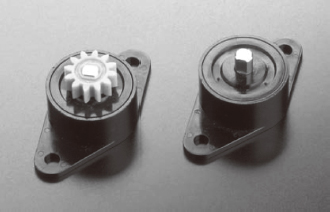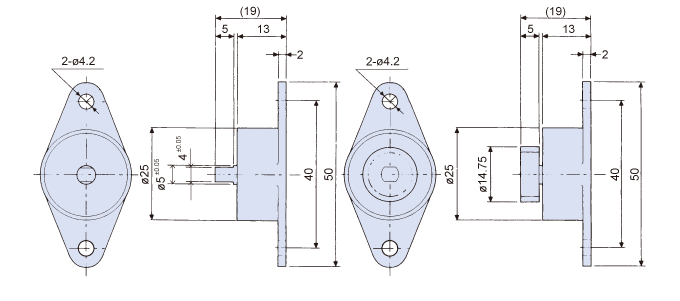

| Model | Rated torque | Damping direction |
|---|---|---|
| FRT-D2-501(G2) | (50±10)X10-3N·m (500±100gf·cm) |
Both directions |
| FRT-D2-102(G2) | (100±20)X10-3N·m (1000±200gf·cm) |
Both directions |
| FRT-D2-152(G2) | (150±30)X10-3N·m (1500±300gf·cm) |
Both directions |
| FRN-D2-R501(G2) | (50±10)X10-3N·m (500±100gf·cm) |
Clockwise |
| FRN-D2-L501(G2) | Counter-clockwise | |
| FRN-D2-R102(G2) | (100±20)X10-3N·m (1000±200gf·cm) |
Clockwise |
| FRN-D2-L102(G2) | Counter-clockwise | |
| FRN-D2-R152(G2) | (150±30)X10-3N·m (1500±300gf·cm) |
Clockwise |
| FRN-D2-L152(G2) | Counter-clockwise |
Note 1) Rated torque measured at a rotation speed of 20rpm at 23˚C
Note 2) Gear model number has G2 at the end
Note 3) Torque can be customized by changing the oil viscosity (see Customizable Torque Chart on page 57)

| Profile shifted spur gear | |
|---|---|
| Tooth profile | Involute |
| Module | 1 |
| Pressure angle | 20˚ |
| Number of teeth | 12 |
| Pitch circle diameter | ø12 |
| Addendum modification | 0.375 |
